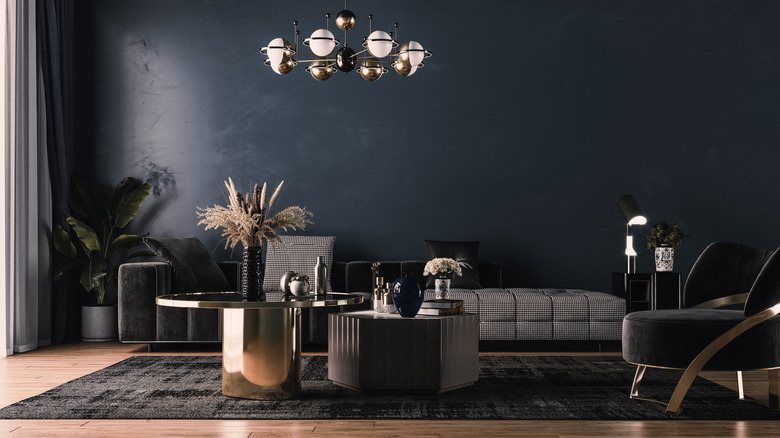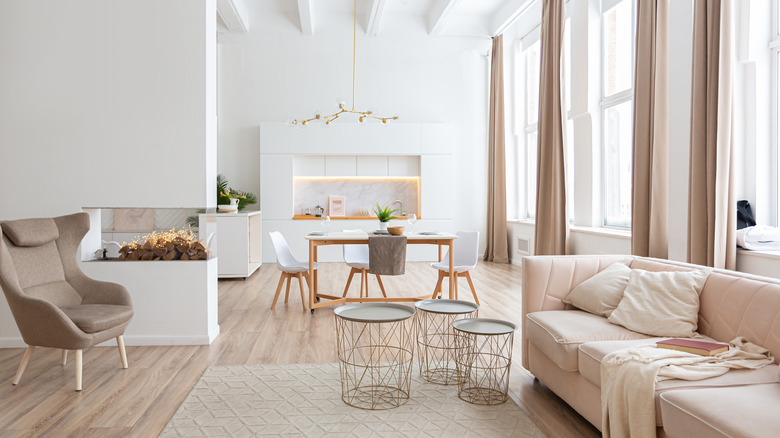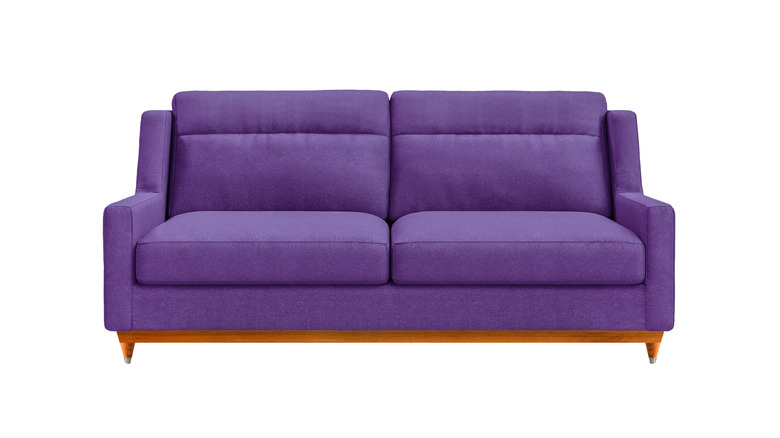What Color Furniture Goes Best With Light Hardwood Floors?
The addition of hardwood floors can transform a home environment significantly. Family Handyman reports that hardwood flooring can greatly increase the value of your home, with an estimated 70% to 80% return on investment. Homeowners are increasingly selecting a lighter hardwood option as it provides a versatile foundation to build out the rest of the room. However, choosing a complementary color scheme for your furniture can be a challenge. There are several great options to choose from, allowing homeowners to balance the aesthetic with carefully chosen items of furniture or to make a bold statement with the decoration.
Valid House suggests that color schemes ranging from white to black, and even blue, purple, or more muted blondes, beiges, and browns can all blend with lighter hardwood flooring admirably. Matter Brothers note that every hardwood flooring installation is a little different and that the underlying color tones in the wood can help you make a more informed selection. Some lighter hardwoods will be marked by tonal reds, yellows, or even a greyish white. If you can detect these elements, you should strongly consider making use of the same palette for any additional features in the room, from the paint selection to the furnishings.
Black or dark colors for balance
Home Decor Bliss notes that grey and black color schemes work particularly well with light hardwood flooring. Dark colors contrast perfectly with the lighter tones on the hardwood floor. This contrast makes for a unique tonal diversion that produces a striking visual effect. When matched up well, dark fabrics and light-colored wood complement one another perfectly. In addition, REthority recommends using contrast. If you choose a dark-colored sofa then you can try complementing it with a white rug or cushions. This works in a kind of harmony that communicates the concepts of yin and yang.
A part of the feng shui approach leans on this balance heavily. Pairing symmetrical elements with additions that subvert your expectations can make for an intimately styled room that provides comfort, relaxation, character, and luxury. Considering an offset color scheme is a great way to liven up the room and add a unique flair that ties in with your overall style.
White and cream to brighten up a room
Matter Brothers recommend matching similar tones for classic color coordination. Selecting creamy, light-palette colors for your furniture and walls will provide an air of sophistication and calmness to a room. Pairing light flooring with light-colored furniture also gives the home a sense of professionalism and luxury, according to Home Decor Bliss.
Just as bathroom tiles are popular in lighter colors, making use of light-colored furniture can give your home a sense of openness and make rooms feel larger, explains Homenish. It's also practical to think about rugs and other soft furnishings in the room, as with light-colored furniture, you can opt for a contrasting dark rug or curtains to offset the palette. Alternatively, why not double down on your color choice by using white, beige, or light grey accents to tie the whole room together? Both options work great with this setup and can be used to good effect with traditional and contemporary designs.
A pop of color for a unique look
One final approach is to ditch the conventions altogether. Valid House suggests that deep colors like purple or maroon can work in certain light hardwood floored rooms just as effectively as a color scheme that plays it safer. Bright colors that naturally contrast with the underlying tone of a floor strike an amazing balance in your home, states Homenish.
Bright and colorful choices can make all the difference when it comes to decorating the interior of your home, too. When used as a primary feature, these accent colors create a unique setup and provide a stunning visual effect that really catches the attention of your guests. In addition, bright colors are ideal for showcasing your personal style and flair, while loud yet carefully selected colors can bring out the underlying tones of hardwoods that have subtle hues of red, purple, or blue.



